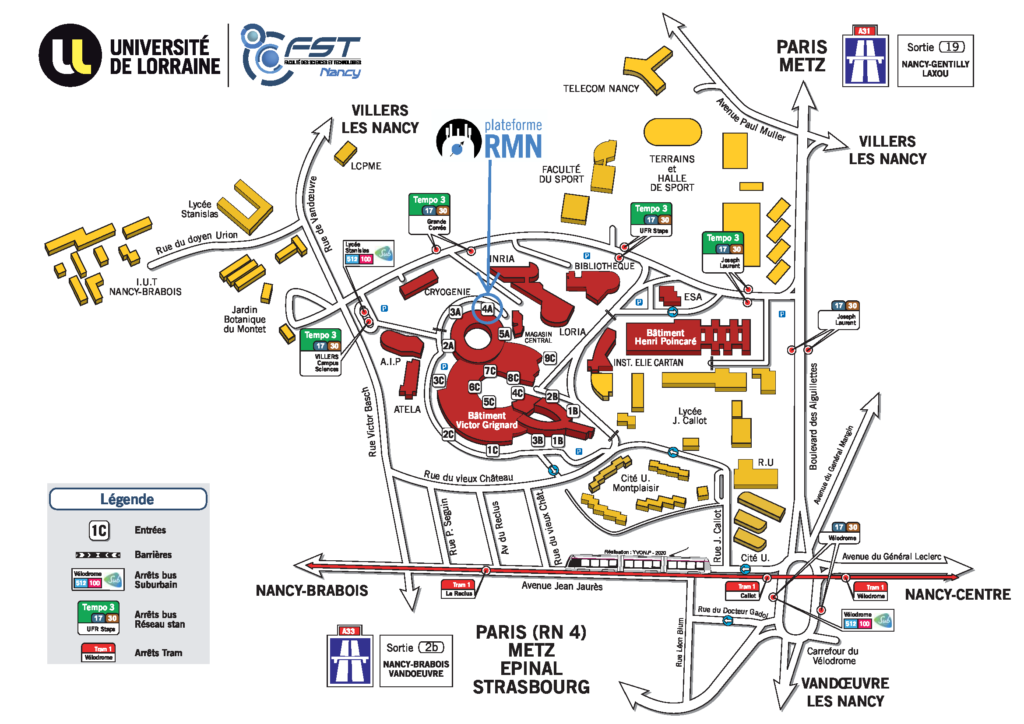
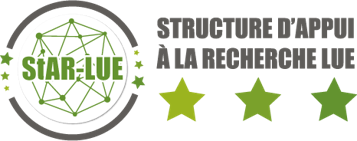
The CRM2 lab houses the Nuclear Magnetic Resonance facility which is dedicated to numerous NMR applications, in liquid or solid phases, but also in MRI in collaboration with the LEMTA laboratory.
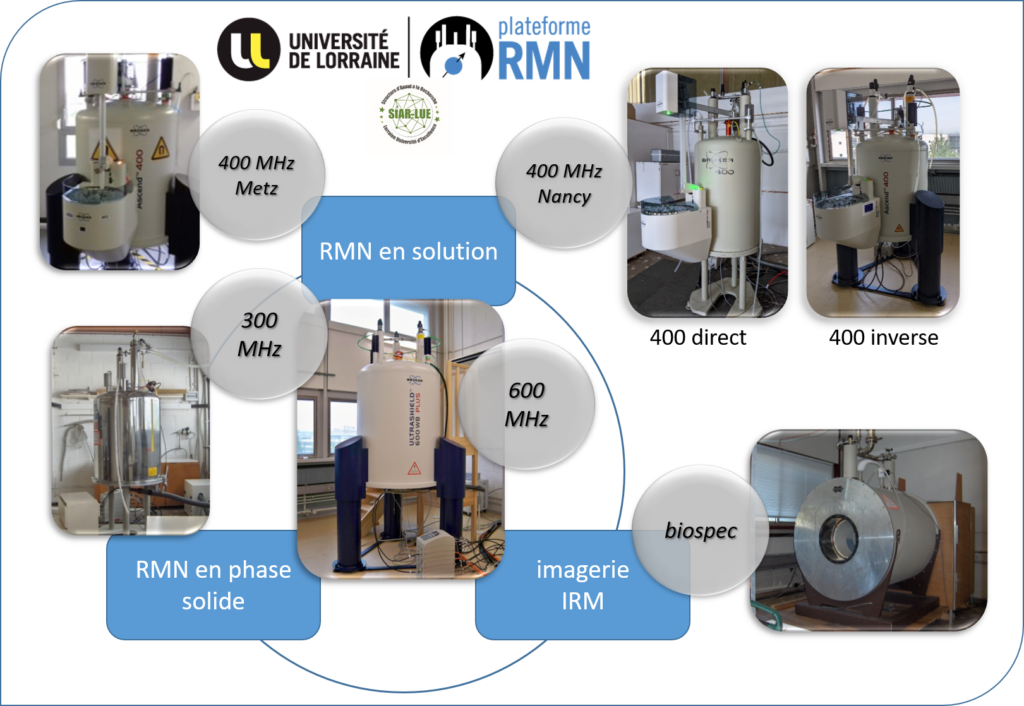
With the objective of making the NMR tool accessible to the entire scientific and industrial community of Lorraine, the facility is located both in Nancy and Metz. It is equipped with six high-field devices (300-600MHz in proton resonance frequency, and 100MHz imager).
The users of this shared facility are from about fifteen different laboratories affiliated to different research departments of the University of Lorraine (CPM, EMPP, M4, A2F research departments…), as well as different industries from Lorraine. It is also involved in teaching, whether in bachelor’s and master’s degrees in chemistry, or at the engineering level (ENSEM). It operates in the form of provision or realization of specific experiments by the facility people.
Equipments
The platform is equipped with six spectrometers: five are used for solution NMR (including one 400MHz instrument located in Metz), two for solid phase NMR, and one for imaging. The three 400MHz spectrometers used for solution NMR are equipped with automatic sample changers.

The platform has a constant policy of acquiring accessories for existing equipment in order to cover new fields of applications (high-temperature NMR, high-speed solid state NMR, etc.) and to maintain a good level of expertise.
The complete description of these equipments is available on the dedicated website of the CPM research department.
Expertise
The main activity of the NMR platform is the molecular characterization of solutions or solids.
Applications in solution NMR are numerous, from structural determination of small molecules, natural or synthetic substances, to dynamic studies of complex systems, by kinetic monitoring for example.
- NMR of proton, carbon, fluorine, phosphorous, boron…of soluble samples in organic or aqueous media, or of semi-solid samples (gels)
- Two-dimensional homonuclear and heteronuclear NMR.
- Monitoring of polymerization or chemical functionalizations by NMR
- Kinetic monitoring
- Host-guest systems
….
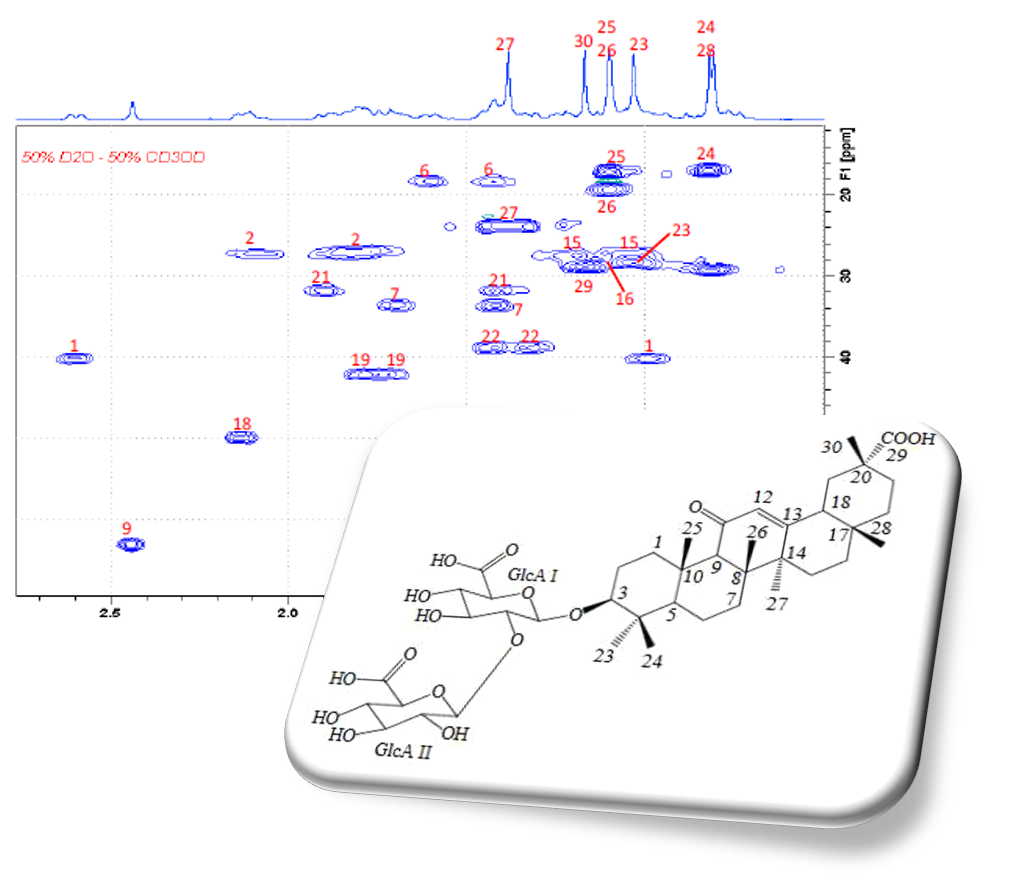
1H-13C HSQC spectrum (1H resonance frequency 400MHz, 300K).
The platform relies mainly on the know-how of the NMR Methodology team of the CRM2, and is therefore able to propose original approaches, involving spin relaxation for example (dynamic properties of molecules, determination of inter-nuclear distances), or taking advantage of the complementarity brought by low-field relaxometry methods and solid phase NMR.
The platform is also equipped for variable temperature analysis as well as DOSY analysis (diffusional NMR to identify the components of a mixture).
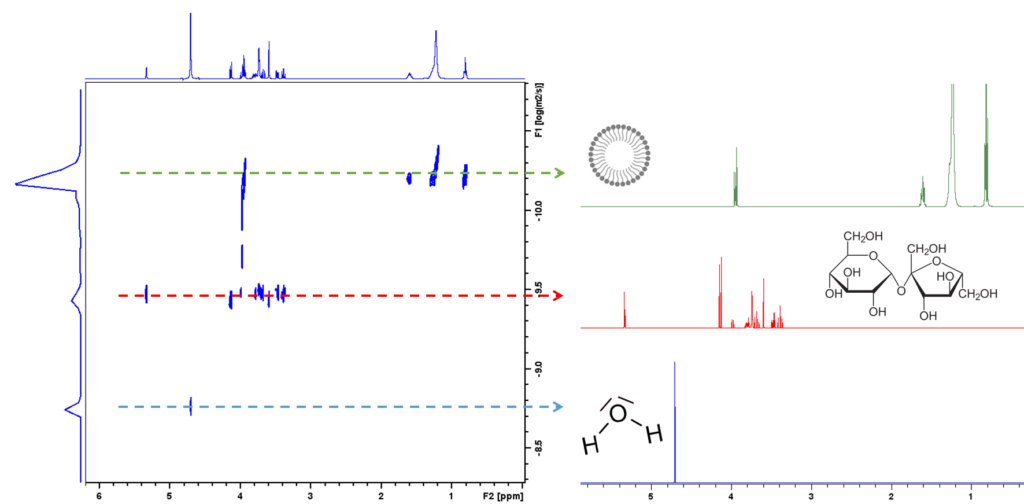
Analytical separation of a mixture of compounds according to their diffusion coefficients. Mixture composed of SDS micelles, sucrose and water.
In solid state NMR, the atomic scale structure of different materials can be studied. Cross-polarization techniques with sample rotation at the CP-MAS magic angle are proposed on the two instruments of the platform, at 300MHz and 600MHz (1H resonance frequency). One or two dimensional methods can be used.
The analyses allow to probe the dynamics and the local molecular order in systems without long range organization.
In addition to the classical measurements (in quantitative or non-quantitative mode) carried out in 13C or 29Si, the NMR platform is equipped to study many NMR observable nuclei (7Li and 6Li, 23Na, 31P, 19F, 27Al…) over a wide temperature range.
The amount of sample required ranges from a few mg for the most sensitive nuclei to a few hundred of mg.
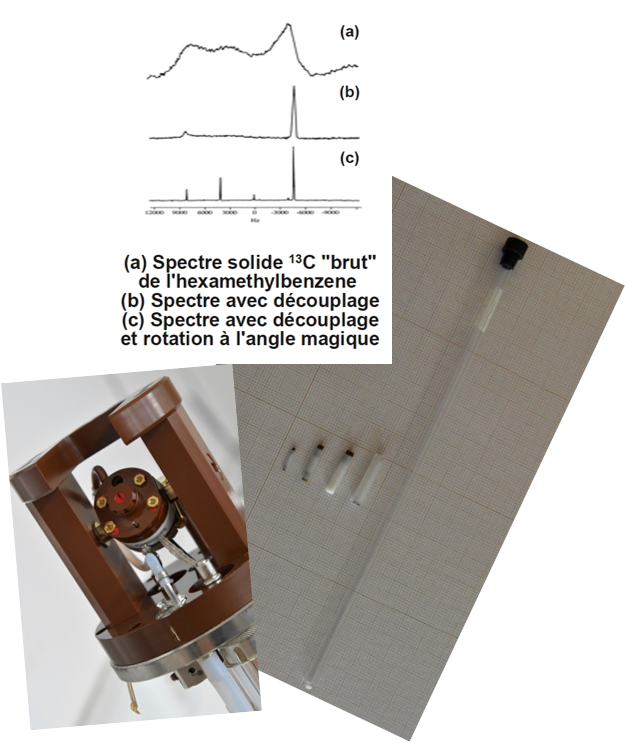
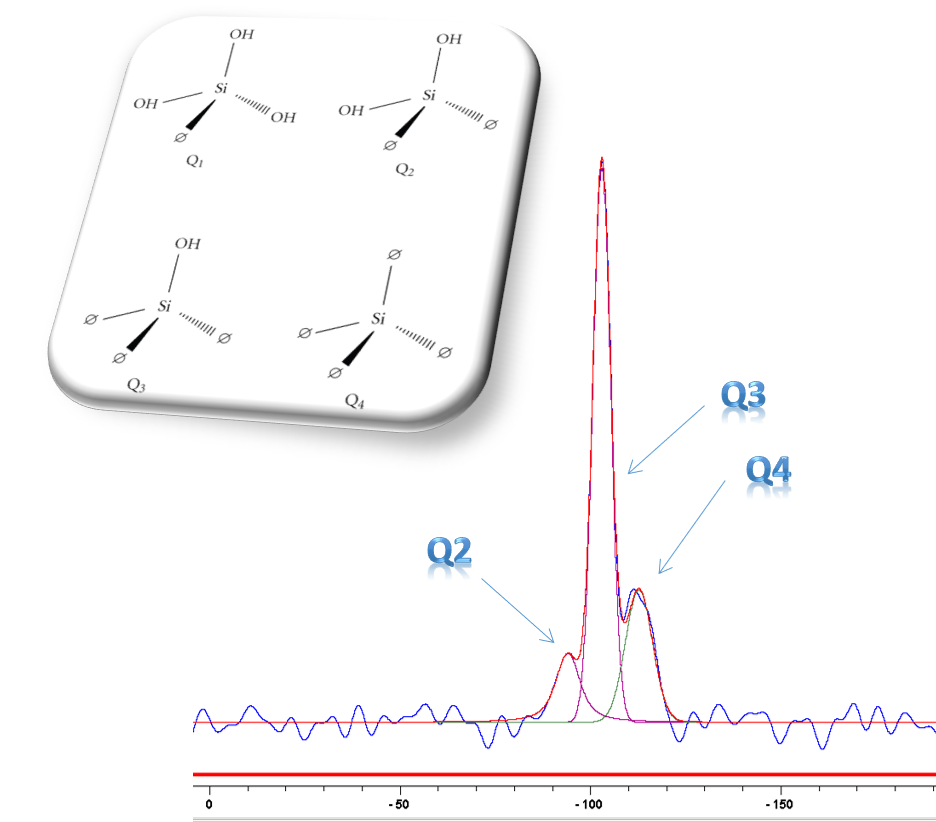
Deconvolution of the 29Si spectrum of a silicic material allowing to distinguish the sites according to the number of bound oxygen atoms (themselves bound or not to other silicon).
The platform also relies on the expertise of the team “MRI for Engineering” of the LEMTA laboratory for all MRI measurements of the platform.
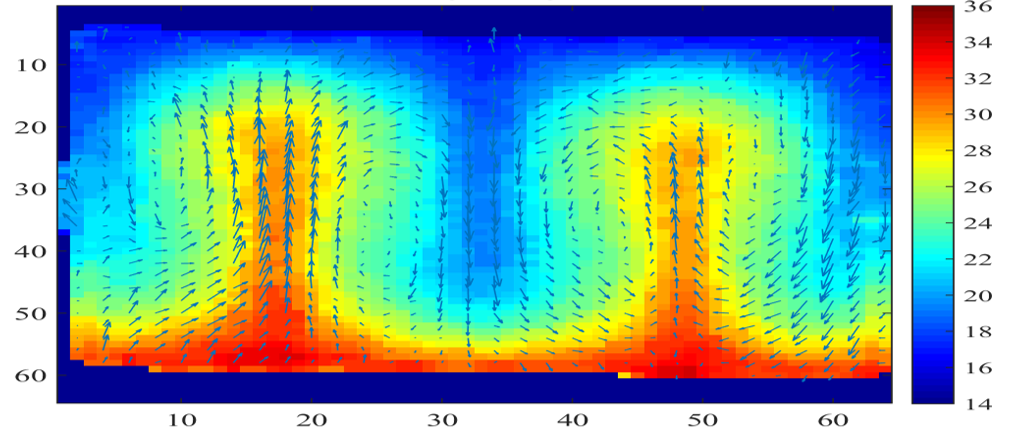
Temperature and velocity mapping in glycerol.
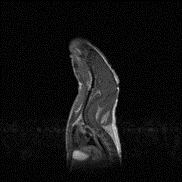
Cross-sectional image of the anterior part of a mouse.
Quality management
The platform is labeled StAR-LUE (Structure d’Appui à la Recherche de Lorraine Université d’Excellence) since November 2020.

Within this framework, a Quality Management System (QMS) has been set up according to the INFRA+ standard.
Our charter and our quality policy are available on the dedicated website of the CPM research department.
Applications and access
Of the six spectrometers, two are freely accessible (users must have received safety and use trainings) and the other four are reserved or used for services requiring the intervention of the platform’s competent personnel.
Rates and reservation schedules are available on the dedicated website of the CPM research department.


